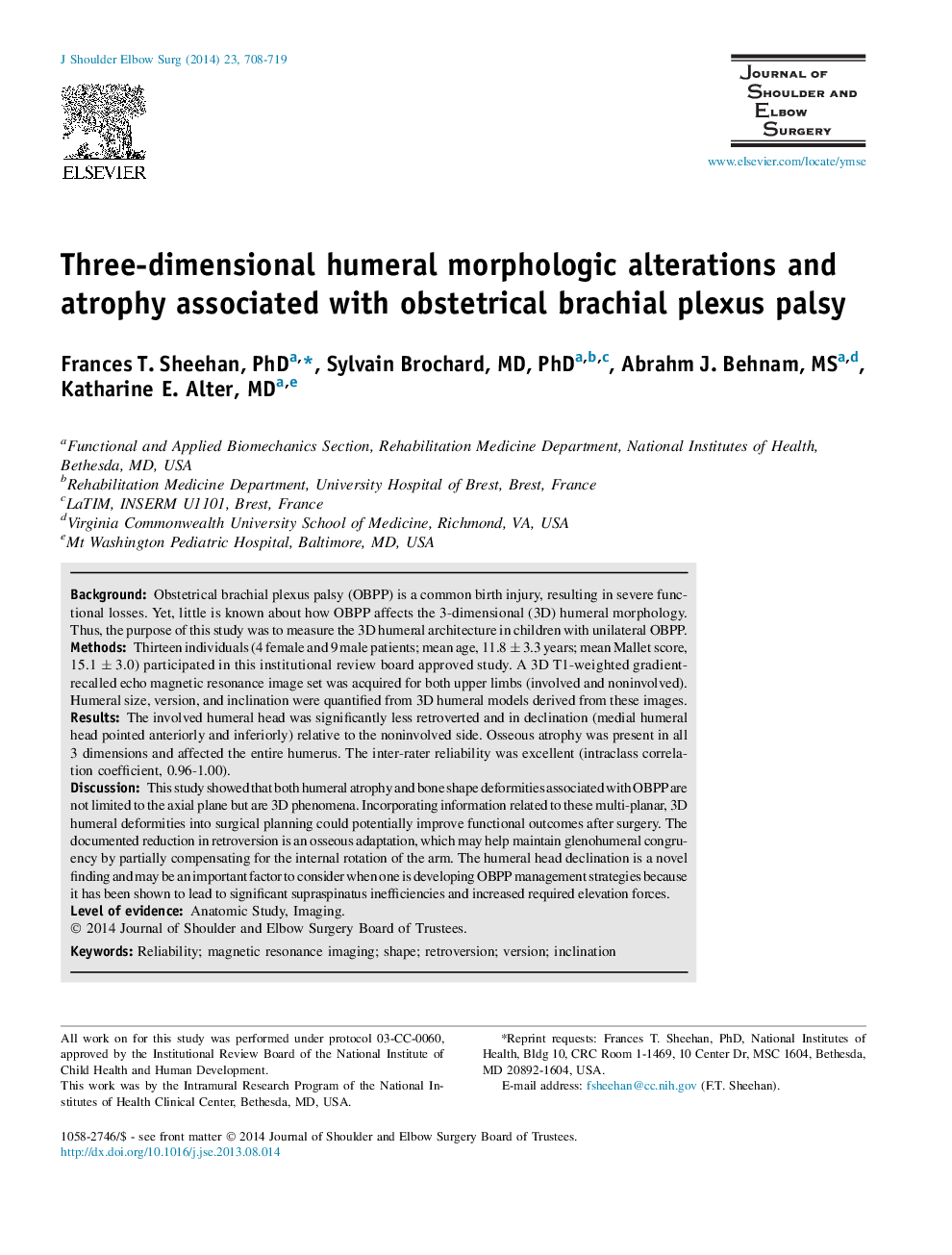| کد مقاله | کد نشریه | سال انتشار | مقاله انگلیسی | نسخه تمام متن |
|---|---|---|---|---|
| 4074433 | 1267009 | 2014 | 12 صفحه PDF | دانلود رایگان |
BackgroundObstetrical brachial plexus palsy (OBPP) is a common birth injury, resulting in severe functional losses. Yet, little is known about how OBPP affects the 3-dimensional (3D) humeral morphology. Thus, the purpose of this study was to measure the 3D humeral architecture in children with unilateral OBPP.MethodsThirteen individuals (4 female and 9 male patients; mean age, 11.8 ± 3.3 years; mean Mallet score, 15.1 ± 3.0) participated in this institutional review board approved study. A 3D T1-weighted gradient-recalled echo magnetic resonance image set was acquired for both upper limbs (involved and noninvolved). Humeral size, version, and inclination were quantified from 3D humeral models derived from these images.ResultsThe involved humeral head was significantly less retroverted and in declination (medial humeral head pointed anteriorly and inferiorly) relative to the noninvolved side. Osseous atrophy was present in all 3 dimensions and affected the entire humerus. The inter-rater reliability was excellent (intraclass correlation coefficient, 0.96-1.00).DiscussionThis study showed that both humeral atrophy and bone shape deformities associated with OBPP are not limited to the axial plane but are 3D phenomena. Incorporating information related to these multi-planar, 3D humeral deformities into surgical planning could potentially improve functional outcomes after surgery. The documented reduction in retroversion is an osseous adaptation, which may help maintain glenohumeral congruency by partially compensating for the internal rotation of the arm. The humeral head declination is a novel finding and may be an important factor to consider when one is developing OBPP management strategies because it has been shown to lead to significant supraspinatus inefficiencies and increased required elevation forces.
Journal: Journal of Shoulder and Elbow Surgery - Volume 23, Issue 5, May 2014, Pages 708–719
